Design of building air conditioning systems: important nuances and stages of the design
It is difficult to disagree that maintaining a comfortable room temperature and good air exchange is the basis of a normal microclimate in a building of any purpose. Modern climate technology and equipment to improve ventilation work can create a comfortable atmosphere in a room in just a few minutes - with the right temperature and an acceptable humidity threshold.
However, the simple installation of any model of air conditioning you like can not always solve the problem of excessively high air temperature, agree? Therefore, professional and competent design of building air conditioning systems is the first step before buying such equipment. Selection of the optimal equipment and its installation in the right place will allow cooling or heating the air with the lowest energy consumption and take into account the needs of all those present in the room.
In this material we will consider the main stages of creating a project for an effective air conditioning system, we will understand the calculations that need to be made during planning, and we will learn how to draw up the correct scheme for air temperature control.
The content of the article:
The need for air conditioning
System conditioning like ventilationplays a huge role in maintaining a comfortable atmosphere for the life and work of people. Too hot air seriously affects the well-being and performance of a person, so it is still necessary to take care of the microclimate of the room and the direction of movement of the air masses at the stage of construction or repair of the building.
In addition to influencing people, temperature and humidity are also reflected in the operation of equipment in offices or production halls.High temperatures increase the load on the equipment, which can cause damage to certain components.

Maintaining the right temperature can also become the basis of safety. Storage of certain materials in rooms with excessively heated air is simply unacceptable. To reduce the likelihood of a fire, the air cooling system must work properly and fully compensate for excess internal and external heat.
Why is it necessary to draw up a project?
Compliance with the necessary standards and accurate calculation of the load on the air conditioning system saves users from a lot of problems. In the process of creating the plan takes into account a huge number of factors that can affect the efficiency of the equipment. Without taking into account these nuances, the functioning of the parts of the air conditioning system can have an unacceptably low efficiency.
A competent approach to creating a project makes it possible to implement key tasks, which include:
- maintaining optimal temperature and humidity in the building;
- selection of the most suitable climate and ventilation equipment;
- the ability to multizone temperature settings;
- gentle operation of the equipment, which contributes to its wear resistance;
- organization of the correct direction of air flow;
- extremely low power consumption to achieve specified temperature conditions, etc.
When designing, the aesthetic features of the air conditioning system are also taken into account. The air-cooling system can be filigree inscribed in the interior, if its integration into the room is approached competently and with experience.
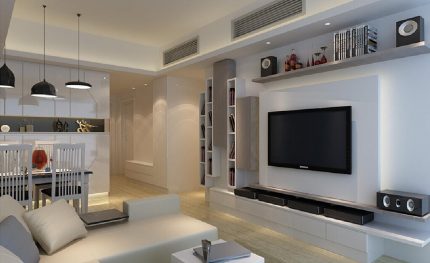
You should not skip the stage of planning the air conditioning system, since it is a clear plan that allows you to develop an effective concept for cooling any room or the whole building, prepare the necessary drawings and specific tasks for installation crews, electricians and other specialists.
Types of air conditioning
Calculations and specific features of the room affect the choice of air conditioning. In each of them, certain models of air conditioners are used, which can be divided into three broad types: domestic, industrial, commercial.
The systems themselves are divided into the following types:
- multizone complexes;
- split and multisplit systems;
- central cooling;
- precision conditioning;
- chiller fan coil systems;
- systems with duct or roof air conditioners, etc.
For home use, multizone split systems and multisplit systems. The main difference between such complexes is the number of indoor units of equipment.
Split system implies the presence of one internal cooling unit, multisplit - five, and in multizone complex 10 to 15 links are integrated, which function thanks to an extremely powerful outdoor unit.

The preparation of a plan for an efficient air conditioning system is based on the calculation of the hot air balance, while taking into account all the key factors that affect the microclimate inside the building.
Design is subject to regulatory documents, takes into account sanitary, architectural, fire and other requirements.
Calculations for system planning
To select the optimal power of the working outdoor unit and calculate the number of house buildings, the internal and external thermal load on the building is taken into account.
Internal heat loads are always positive and represent heat from people living in the house, the production of thermal energy from household appliances and light sources. In commercial or office premises, heat from energy-intensive equipment is added to such a load on the air-conditioning system, in industrial buildings - heat transfer from hot liquids, equipment, as well as heat generated during chemical reactions.
External heat loads can have both negative and positive characteristics. Therefore, the external load is heat gain or heat loss.
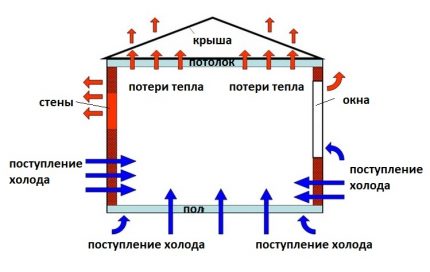
Sources of such heat load are:
- sunlight penetrating through double-glazed windows;
- heat or cold, the conductors of which are walls, window structures, floor, roof and ceiling;
- heat loss and heat gain from fresh air ventilation.
Quantitative indicators of the same type of external heat load can vary from positive to negative loads during the day, for example, with a large amplitude of the difference in day and night air temperatures, and from season to season. For example, in summer, the temperature difference in the street and in the room is insignificant, so heat penetrates the building more easily. In winter, the reverse process occurs, in which heat leaves the structure faster.
Calculation of the hot air balance allows you to choose the right equipment and plan the right place for installing the air conditioner.
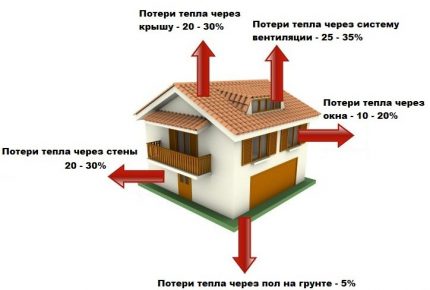
When calculating the key factors that affect the intake and loss of heat are necessarily taken into account:
- climatic features of the area;
- materials of which the building is built;
- wall thickness and the presence of insulation;
- the number of cameras in a double-glazed window and the general energy efficiency of a window design;
- orientation of the building to the cardinal points;
- the presence of equipment and machinery that produce heat during operation;
- the number of people living or regularly staying in the room;
- number of rooms in an apartment or house, etc.
Based on this, it is easy to understand that only an experienced professional can approach the plan of the future air conditioning system as accurately and correctly as possible, since in the process of preparing the project it is necessary to provide for too many specific nuances.
Design Stages
The preparation of the necessary work plan is carried out in two consecutive stages, including the preparation of all necessary calculations, estimates, technical tasks for specialists in related fields and the selection of a suitable model range of equipment.
Stage # 1 - preparation of calculations and tasks
Preparation consists in acquaintance with the building, its location, construction features and other factors.
Specialists draw up a feasibility study, on the basis of which the type of air conditioning system is approximately selected. The latter is described in a simplified manner.
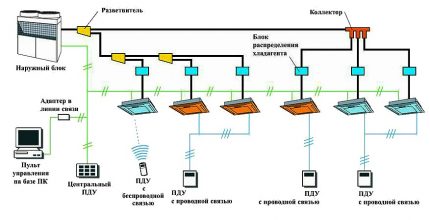
The master offers potentially effective equipment that meets the needs of the premises in terms of basic characteristics:
- power;
- cold, heat and air capacity.
After that, an estimate is made of future work. If the feasibility study project satisfies the owner of the building or apartment, the preparatory phase goes into the working phase.
Stage # 2 - selection of suitable equipment
At this stage, the design is based on accurate calculations, taking into account the internal and external heat load, thermal characteristics of the object. Calculations are carried out individually for each room, after which excess heat in each zone is precisely known. Based on these data, the equipment necessary to compensate for thermal loads is selected.
After choosing the equipment, the design of the installation sites for the air conditioners begins, a layout of air ducts is provided, a technical work plan for the installation team, electricians is prepared.
All prepared materials are handed over to the customer and the supplier of HVAC equipment. After installation, it is advisable to carry out commissioning work that will help set up the operation of the equipment.
What is fraught with self-designing?
Without proper experience and knowledge, it is quite difficult to personally draft a complex for air conditioning.
If you do not take into account at least one factor, for example, the orientation of the apartment to the north side or the presence of double-glazed windows with low heat storage efficiency, the entire air conditioning system will work inefficiently.

In addition, the climate equipment can be subjected to more severe loads, since in the process of conditioning, the equipment will have to constantly compensate for the thermal receipts not taken into account by the designer.
In general, any deficiency in the drafted project can lead to serious problems:
- unjustified operation of the air conditioner in one room, while most households are in other rooms;
- overspending electricity, which is spent on suppressing unaccounted heat from lighting or equipment;
- the impossibility of zone temperature control;
- purchase of too powerful or inefficient equipment;
- quick wear orbreakdown nodes of the split system due to excess load, etc.
Therefore, drawing up an air conditioning scheme, even for small homes or offices, should be entrusted to professionals.
Saving money on design can result in unreasonable costs during the operation of the equipment.
Conclusions and useful video on the topic
Five types of the most common air conditioning systems, their features, differences and capabilities are described in detail by the lecturer from the following video:
The basic device of the air conditioning systems and recommendations for choosing the appropriate type are given by the ventilation and air conditioning engineer:
A professional approach to air conditioning of buildings allows you to provide the necessary temperature, cleanliness, humidity and air mobility, which determine the well-being and performance of people, the functioning of complex equipment, the safety of furniture or certain materials.
The design process is quite complex and time-consuming, so you need to approach it with extreme responsibility. That is why you should not engage in planning yourself, but pre-select a team of professionals who have experience, a positive reputation and access to such calculations.
Still have questions about the design of air conditioning systems? Ask them to our experts and other site visitors in the feedback section. Leave your comments, share experiences, take part in the discussion.

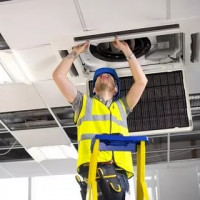 Design and installation of ventilation systems: the best schemes + installation nuances
Design and installation of ventilation systems: the best schemes + installation nuances 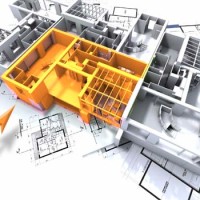 What is needed for ventilation design: regulatory framework and project design
What is needed for ventilation design: regulatory framework and project design 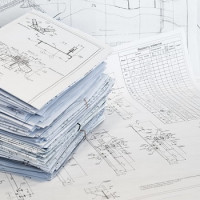 Typical schemes and rules for designing a ventilation system in a private house
Typical schemes and rules for designing a ventilation system in a private house 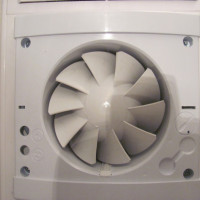 Hood for bathroom and toilet: the subtleties of creating a project and the nuances of arranging the system
Hood for bathroom and toilet: the subtleties of creating a project and the nuances of arranging the system 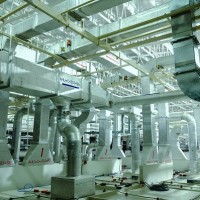 Requirements for ventilation of public buildings: subtleties of arrangement and design of ventilation
Requirements for ventilation of public buildings: subtleties of arrangement and design of ventilation  Types of ventilation systems: a comparative overview of the options for organizing ventilation systems
Types of ventilation systems: a comparative overview of the options for organizing ventilation systems  How much does it cost to connect gas to a private house: the price of organizing gas supply
How much does it cost to connect gas to a private house: the price of organizing gas supply  The best washing machines with dryer: model rating and customer tips
The best washing machines with dryer: model rating and customer tips  What is the color temperature of light and the nuances of choosing the temperature of the lamps to suit your needs
What is the color temperature of light and the nuances of choosing the temperature of the lamps to suit your needs  Replacement of a geyser in an apartment: replacement paperwork + basic norms and requirements
Replacement of a geyser in an apartment: replacement paperwork + basic norms and requirements